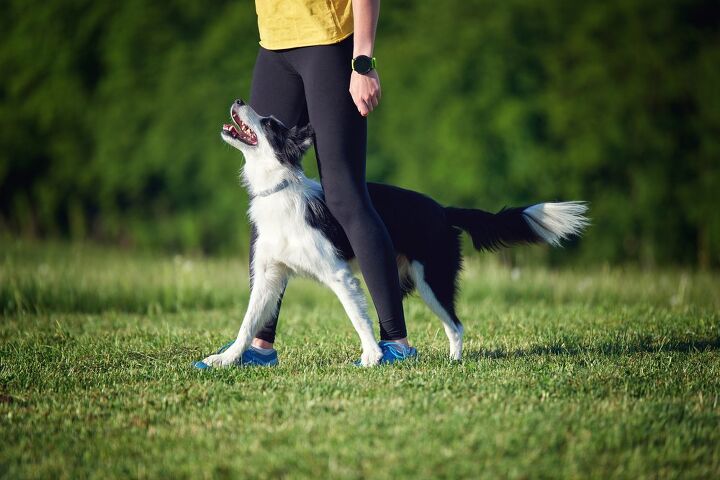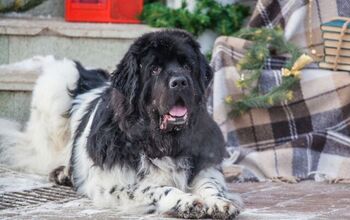How To Train a Dog With High Prey Drive

There are some things you simply can’t train out of a dog and a high prey drive is one of them. It’s an inherent trait that all dogs possess in varying degrees. And while some breeds are mild and relatively easy to manage, with others - such as terriers, hounds, and herding breeds – the urge to hunt and chase is so deeply ingrained in their DNA that the best you can strive for is managing versus eliminating this powerful instinct.
What Is a High-Prey Drive?
In a nutshell, it’s your dog’s need to spot, chase, then possibly catch his prey - be it squirrels, birds, larger animals or even the friendly family cat. And there are eight stages or sequences in how the process transpires: eye, orient, stalk, chase, grab/bite, kill/bite, dissect and consume.
While many dogs may be quick to complete only the first three or four stages – dropping out after the chase - for others the grab, bite, kill and consume sequence is all part of the predatory process. And this is what creates an unfair environment for wildlife, smaller dogs at a leash-free, and even pets like guinea pigs and rabbits that happen to catch his attention. To be clear, this is not aggressive behavior from a dangerous dog but is instinctive and requires you to work with your pet to get it under control.
Signs of a High Prey Drive Dog
So, how do you determine if your pooch’s pursuit of the odd squirrel now and then categorizes him as having a high prey drive or simply a playful nature? Here are some of the signals to watch for:
Fixating on Potential Prey
If your dog suddenly stops, stares, and fixates on something he sees nearby or even in the distance – a bird, squirrel, or other small animal – he may have a high prey drive. While most dogs will notice and react to the sudden movement of another animal, those with a high prey drive will zero in on and size up what they consider to be prey they could possibly take down. While this is happening, your dog will zone out on any commands you try to send his way and will be seemingly oblivious to your presence.
Stalking or tracking
We’ve all seen our pets do it. Slowly sneaking up on a toy before they lunge, grab and play. For a dog with a high prey drive, this type of tracking also happens with animals, birds, even a piece of blowing paper or a crawling insect. And it presents at a slow, patient pace that includes sniffing at the ground to pick up the scent. Again, many dogs can exhibit this need to “stalk” a favorite toy but you’re looking for this behavior around smaller animals and with a total focus that is non-responsive to your commands.
Continual Chasing
That your dog loves to chase down a thrown tennis ball or Frisbee is not a clear sign that he has a high prey drive. However, if you notice he tends to pursue anything that moves – including cars, bicycles, cats and other dogs – then you’re working with a dog that has stronger instincts. In some instances, this inherent need to chase can be dangerous for your pet and may require him being leashed or secured when not in a controlled environment.
Biting or Killing Small Animals
While many breeds love the fetch and retrieve game that nets them lots of treats, a dog with a high prey drive will track down, catch and potentially injure or kill without command. Similarly, if you find dead or injured animals in your yard, you may be dealing with a dog that requires monitoring, restraints or even muzzling when not in your direct care. A tip-off that your dog is becoming prey-driven may present as mouthing and playful bites that become more aggressive and painful.
You’re Not the Boss of Me
Yes, we’ve all had those days when our pooch decides to ignore our commands - whether getting down off the sofa, dropping something icky or refusing to leave the dog park. But when you’re trying to call your dog off an escalating situation that includes stalking, chasing or catching another animal, and he's non-responsive to you because he’s caught up in the moment, then your dog clearly has a high prey drive.
If you recognize your dog in any of these examples, the next question is “how do you manage this behavior?” While it will require consistency and dedication, this can be done and here are a few tips:
1. Tire Him Out
No surprise, that modifying this type of behavior begins with depleting your pet’s urge to hunt and chase. Breeds that are typically known for having a high prey drive also tend to be working dogs that need to expend energy by performing a function. So, get out the leash and take him out on a rigorous walk or run. Play a game of catch and retrieve using a frisbee or tennis ball that will not only exhaust him physically but satisfy that need to pursue and capture.
2. Provide Fun Alternatives
Meeting your dog’s need to hunt down and capture can include burying toys or treats in dirt or sand – particularly satisfying for terriers who love to dig. Or provide your dog’s favorite treats in a bag or puzzle toy that requires him to work away at in order to enjoy his reward. The goal is to relieve your dog’s pent-up energy while also satisfying his predatory instincts to claw and tear.
3. Focus First
Whether you’re about to train an easily distracted puppy or a dog with a high prey drive, it’s imperative that you first be able to capture his undivided attention. Without this, whatever command you give will go unnoticed as he continues to scan and sniff for potential prey. So, start by reducing distractions and practicing in a controlled environment. Clicker training is a great tool for accomplishing this next step. Call his name, hold the treat close to your face and each time he looks directly at you, click the clicker and offer the treat. Gradually increase the length of time between him looking at you and you clicking/offering up a treat.
4. Respond to Commands
Not only is taking control of your pet’s instinctive need to hunt and chase important for wildlife and small animals around him, but also your pet’s safety. Skunks, porcupines, cars and cyclists can cause serious injury to a dog that initiates a chase.
If your dog is known to have a high prey drive that you struggle to manage, keep him leashed when outdoors and maintain a safe yard with jump-proof fencing and securely locked gates. Consider allowing only adults or trained dog-walkers to take him out when you’re not available, and ensure they’re aware of his behaviors and have the tools needed (treats) to reign him back when necessary.

Sharing space with three seriously judgy Schnoodles and a feline who prefers to be left alone. #LivingMyBestLife
More by Mary Simpson























